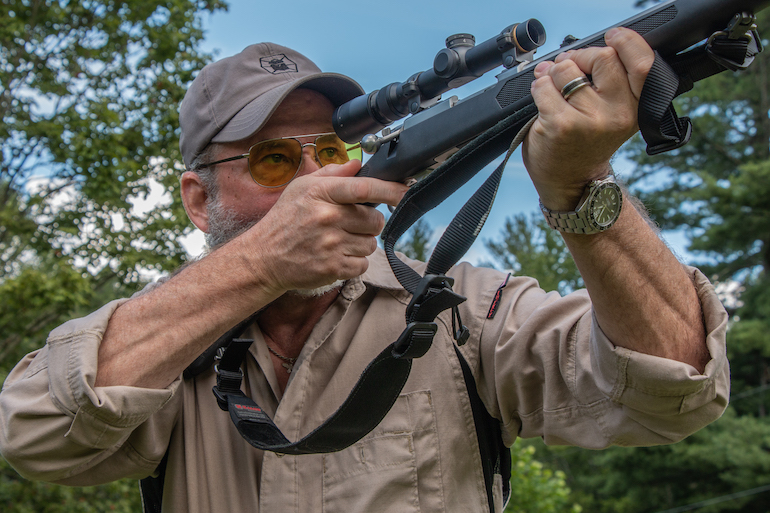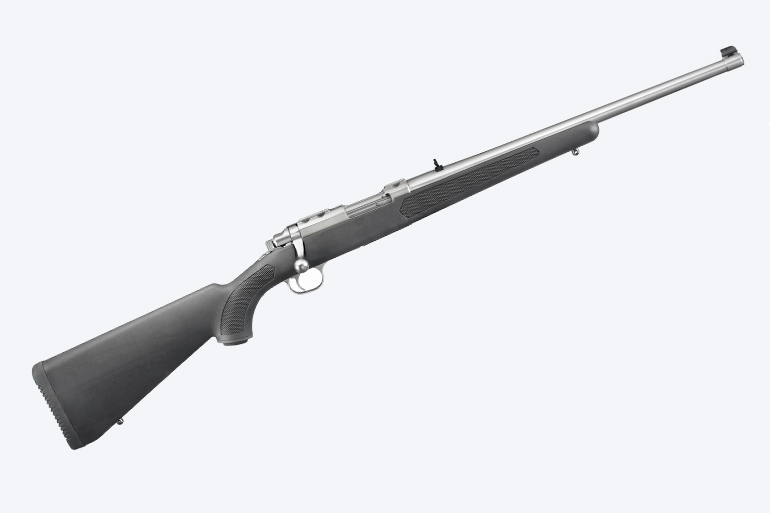
Photo by Richard Mann
Deer hunters have been brainwashed by gun writers. Many almost believe that if their cartridge cannot push bullets to 3,000 fps or ring steel at 1,000 yards, their bullets will bounce off deer. It may come as a surprise, but deer are just not that hard to kill. A good bullet placed properly is really all that’s needed.
Hunters have been successfully taking deer with .357 Mag. revolvers for a long time, but for some reason a .357 Mag. rifle is considered less than adequate. This is ludicrous; if a deer can be killed with a .357 Mag. handgun, a .357 Mag. rifle—with an additional 300 to 600 fps behind the bullet—should be more effective. Indeed, it can be. However, the hunter must use the right ammunition.
The problem is most .357 Mag. ammunition is intended for revolvers, which means the bullets are designed to perform best at velocities generated in barrels that are about 2 to 8 inches long. Push these bullets faster out of longer rifle barrels, and most of them will fragment. This can drastically limit penetration and the amount of tissue damaged at vital-organ depth.
Fortunately, there is a new .357 Mag. load that is compatible with both revolvers and rifles. Working with Henry Repeating Arms, Federal developed a line of ammunition called HammerDown, which was engineered from the ground up to work in lever-action rifles. In addition to corrosion-resistant nickel-plated cases and a chamfer on the leading edge of the case rim to make loading the cartridges in lever-action rifles easier, the bonded bullets are tuned to optimally perform over a broad range of impact velocities. For example, the 170-grain bullet in the .357 Mag. HammerDown load will expand to a frontal diameter of about 1/2 inch if it impacts a deer at a velocity anywhere between 1,100 and 1,800 fps.
If you have a lever-action .357 Mag. rifle, you now have an excellent big-game load capable of taking deer past 200 yards. It also means the unique little Ruger 77/357 bolt-action rifle is now a prime candidate for deer. No, you will not be shooting across canyons or flattening cornfields with it, but at the distances most deer are killed—inside 200 yards—this is all the gun you need.

I installed a Leupold VX-3i 1.5-5×20 mm riflescope in medium Ruger rings on a 77/357, and it brought the total weight to only 6 1/2 pounds. The 77/357 comes with high (.565-inch) Ruger rings, but these are too high to allow for a good cheek weld when shooting. Unless you are foolish enough to mount some sort of moon scope on this rifle, medium (.435-inch) rings are a better choice. Spend the extra $60 for them.
With the scope zeroed at 150 yards, the HammerDown load’s bullet strikes about 3 1/2 inches high at 100 yards and about 9 inches low at 200 yards. This allows for a dead-on hold on a deer’s vital zone out to 175 yards. At 200 yards I held the scope’s horizontal reticle wire on the top of a 12-inch plate and managed a nice 3-inch, three-shot group almost dead center.
No, it’s not a 6.5 Creedmoor. It’s not even a .30-30. But the Ruger 77/357 paired with HammerDown is plenty for deer. It would also make a great ranch or camp rifle, and the recoil is so gentle it’s ideal for new or young hunters. If you like a lightweight, sweet-handling rifle, you’re apt to fall in love with it.











































